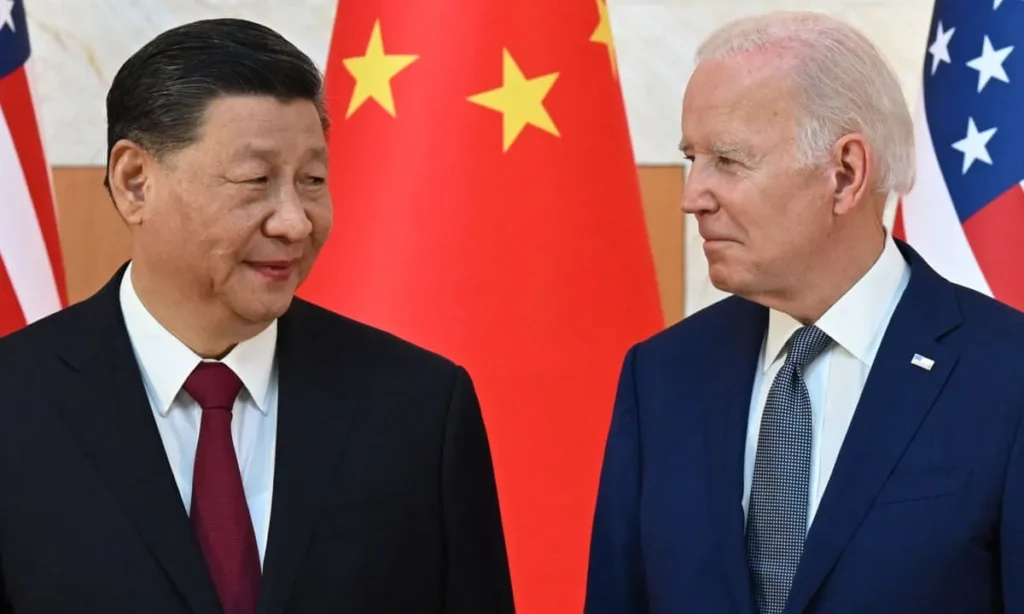In a decisive move signaling a sharp escalation in tech competition and geopolitical rivalry, the United States government has announced plans to ban the use of Chinese-developed artificial intelligence (AI) technologies across all federal agencies. The decision, prompted by rising concerns over data security, surveillance, and digital espionage, underscores the U.S.’s growing efforts to secure its technological infrastructure from foreign influence, particularly from adversarial states like China.
This sweeping ban, which is being introduced through proposed legislation in Congress and supported by key figures in both political parties, marks one of the strongest moves yet in Washington’s evolving stance toward Chinese technology companies, especially those engaged in AI, machine learning, and data-driven software.
Background: U.S.-China Tech Tensions Reach a Boiling Point
Tensions between the U.S. and China have steadily intensified over the past decade, fueled by disputes over trade, intellectual property theft, cyberattacks, and competition for technological supremacy. The U.S. has already placed restrictions on Chinese tech giants like Huawei and ZTE, citing concerns about national security and espionage. The latest effort to ban Chinese AI technologies reflects the increasing scrutiny of AI systems developed by companies tied to the Chinese government.
This action comes after an increasing amount of evidence indicated that Chinese AI systems might be used for illegal data collection of citizens and government information, cyber-intrusion, and spying. Many U.S. lawmakers and cybersecurity experts argue that AI tools developed under China’s governance model are incompatible with democratic values, particularly regarding privacy and human rights.

Scope of the Proposed Ban
The proposed legislation would prohibit all federal agencies—including the Department of Defense, Department of Homeland Security, and intelligence organizations—from procuring, licensing, or using AI software developed in whole or in part by Chinese entities. This includes algorithms used for data analysis, facial recognition, voice processing, predictive modeling, and other AI-powered government services.
Federal contractors and subcontractors would also be required to certify their supply chains as free of Chinese AI influence. Failure to comply could result in contract termination or legal action.
Technologies Targeted Under the Ban Include:
- Facial recognition software from Chinese vendors.
- AI-based surveillance tools are used in law enforcement.
- Predictive algorithms for logistics, intelligence, and defense.
- Cloud-based AI analytics developed by Chinese companies.
The legislation aims to go beyond just banning direct purchases—it also mandates audits, cybersecurity reviews, and origin tracing of software components to ensure compliance.
Key Lawmakers and Agencies Involved
The bipartisan proposal is being led by Senator Marco Rubio (R-FL) and Senator Mark Warner (D-VA), both long-time advocates for national security reform in tech policy. Members of the House Select Committee on the Chinese Communist Party are co-sponsoring the bill in the House.
Senator Marco Rubio commented:
“AI developed under the control of the Chinese Communist Party is not just a competitive threat—it’s a national security risk. We cannot allow algorithms built by adversaries to operate within our federal systems.”
The Cybersecurity and Infrastructure Security Agency (CISA), Office of Management and Budget (OMB), and the Department of Commerce are working together to draft enforcement guidelines, evaluate risks, and assist agencies in identifying vulnerable systems.
Why the U.S. Is Worried About Chinese AI
Several concrete concerns are driving this policy shift:
1. Backdoor Surveillance
Many Chinese AI tools are believed to contain hidden functionalities that can transmit data back to China, either in real-time or via scheduled batch uploads. This raises fears about data leaks from sensitive federal systems.
2. Authoritarian Training Data
AI systems built in China are often trained using surveillance-heavy datasets, including those involving facial recognition of ethnic minorities like the Uyghurs. This raises ethical issues and risks bias in AI algorithms that could be used in U.S. governance.
3. Cybersecurity Vulnerabilities
Software from Chinese developers may have weaker cybersecurity standards or intentionally include vulnerabilities that can be exploited during cyberattacks. This is especially dangerous when used in defense or intelligence settings.
4. AI Influence Campaigns
Some AI models, particularly large language models (LLMs), can be used to conduct influence operations, manipulate public discourse, or spread disinformation.
Impact on U.S. Government Operations
This ban will require a complete audit and overhaul of AI systems across various agencies. Many departments currently use off-the-shelf AI tools for:
- Automating bureaucratic processes.
- Managing security footage.
- Enhancing cybersecurity alerts.
- examining enormous datasets related to immigration, healthcare, and climate policy.
If any of these tools are found to have Chinese codebases, licenses, or dependencies, they must be replaced, which could disrupt workflows and increase costs.
The General Services Administration (GSA) has already initiated an inventory of federal software systems to identify at-risk AI tools.

Related Blog: U.S. Moves to Break Up Google Over Search Monopoly
Reactions from China and Chinese Tech Firms
Unsurprisingly, China has responded sharply to the proposed legislation, calling it a form of “technological McCarthyism.”
China’s Ministry of Foreign Affairs stated:
“The U.S. continues to politicize and weaponize technology, damaging global cooperation and trust. Chinese companies are being unfairly targeted based on ideology, not facts.”
Chinese firms such as SenseTime, iFlytek, and Megvii, some of which are already blacklisted in the U.S., have denied any wrongdoing. They argue that their technologies are used globally and comply with local data privacy laws.
Global Implications and Ripple Effects
This move is likely to influence other countries to reconsider their use of Chinese AI technologies, especially close U.S. allies including Japan, Australia, Canada, and the United Kingdom. The ban could further deepen the global bifurcation of the AI ecosystem, with China and the U.S. leading separate technological alliances.
It may also speed up the “AI decoupling” trend already visible in semiconductor policy, as countries choose sides in the growing tech war.
Additionally, U.S. To stay ahead of compliance requirements, private-sector businesses—particularly those involved in federal contracts or infrastructure—may start deliberately phasing out Chinese AI technologies.
Challenges and Criticism of the Ban
While many experts support the ban, others warn of potential drawbacks:
1. Increased Costs
Replacing embedded AI systems across hundreds of agencies may cost billions of dollars and take years to fully implement.
2. Technical Disruption
If widely used software suddenly becomes noncompliant, it could delay federal programs, especially those reliant on AI for automation and analytics.
3. Lack of Domestic Alternatives
U.S.-based AI vendors will need to quickly fill the gap. There is concern that some agencies, particularly smaller ones, may struggle to find domestic equivalents with similar capabilities.
4. Free Market Concerns
Critics argue that a ban based on country of origin may go too far and hinder competition, innovation, and U.S. global leadership in AI standards.
What’s Next: Implementation Timeline
The proposed legislation is expected to pass through committee stages in the next few months and could be signed into law by early 2026. Implementation would roll out in phases:
- Phase 1 (6 months): An AI audit report is required from federal agencies.
- Phase 2 (12 months): Begin replacement of banned systems.
- Phase 3 (18–24 months): Full compliance deadline, with enforcement by the OMB and CISA.
During this time, training and funding support will be provided to help agencies adapt to the new requirements.
Conclusion: A Defining Moment in AI Policy
The move to ban Chinese AI from U.S. federal use represents a critical inflection point in both tech policy and national security strategy. It acknowledges the profound power of AI, not just as a tool of convenience, but as an arena of global strategic competition.
As the U.S. draws firmer lines around its digital borders, the world watches closely. In an age where algorithms influence everything from diplomacy to defense, decisions made today will shape not just the future of government technology but the geopolitical balance of power itself.
Frequently Asked Questions (FAQs)
Q1: Why is the U.S. banning Chinese AI from federal use?
A: The U.S. government is concerned about national security threats, including data theft, surveillance, and potential cyber vulnerabilities posed by Chinese-developed AI technologies.
Q2: Which Chinese technologies or companies are affected by the ban?
A: The ban targets AI software and tools developed by Chinese companies like SenseTime, iFlytek, Megvii, and others involved in facial recognition, machine learning, surveillance, and data analytics.
Q3: What federal agencies are impacted by this decision?
A: All federal agencies—including the Department of Defense, Department of Homeland Security, and intelligence agencies—must comply with the ban.
Q4: Does the ban include private companies?
A: Private contractors and subcontractors working with the federal government must certify that their systems are free of Chinese AI components or face penalties.




